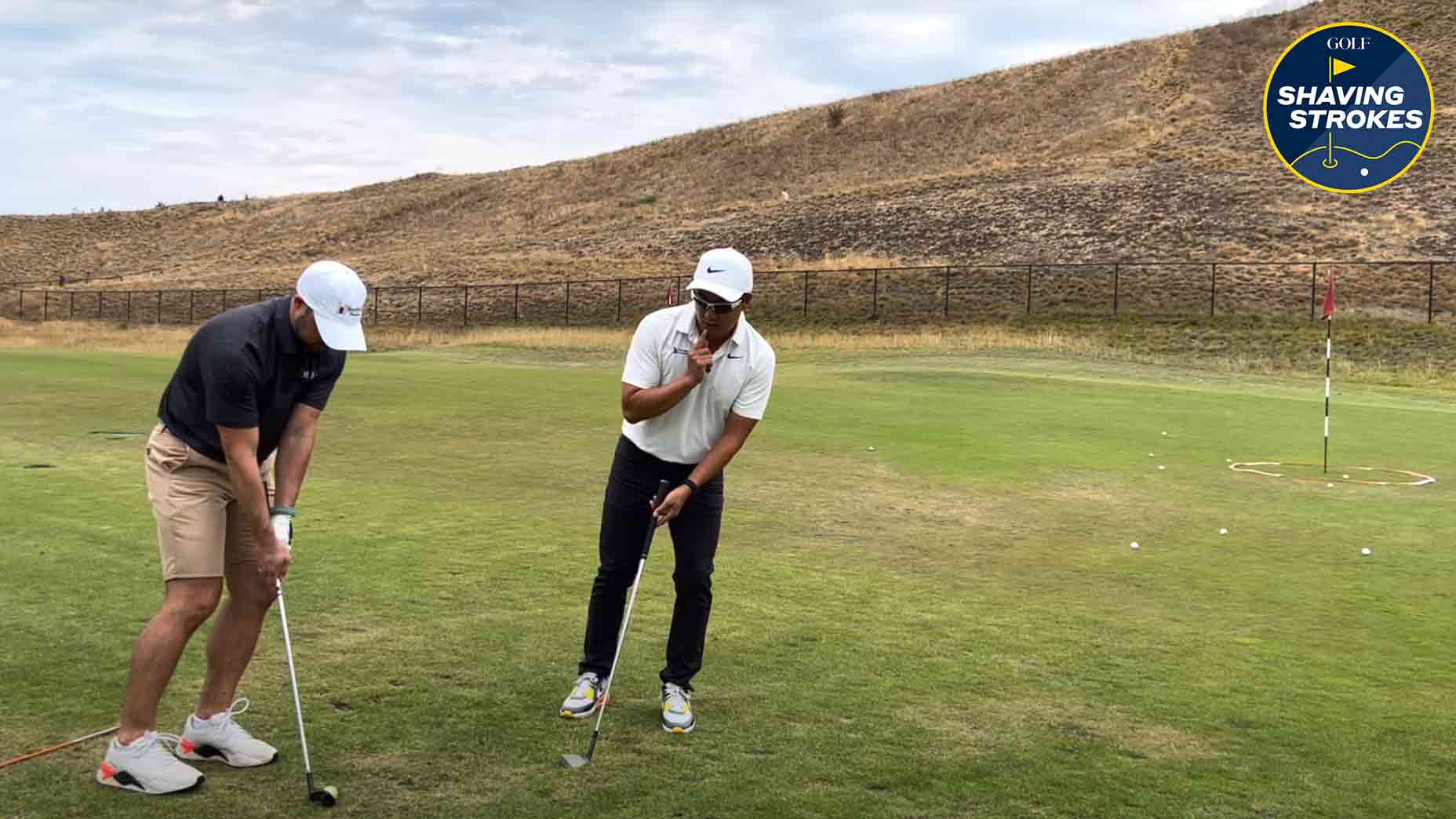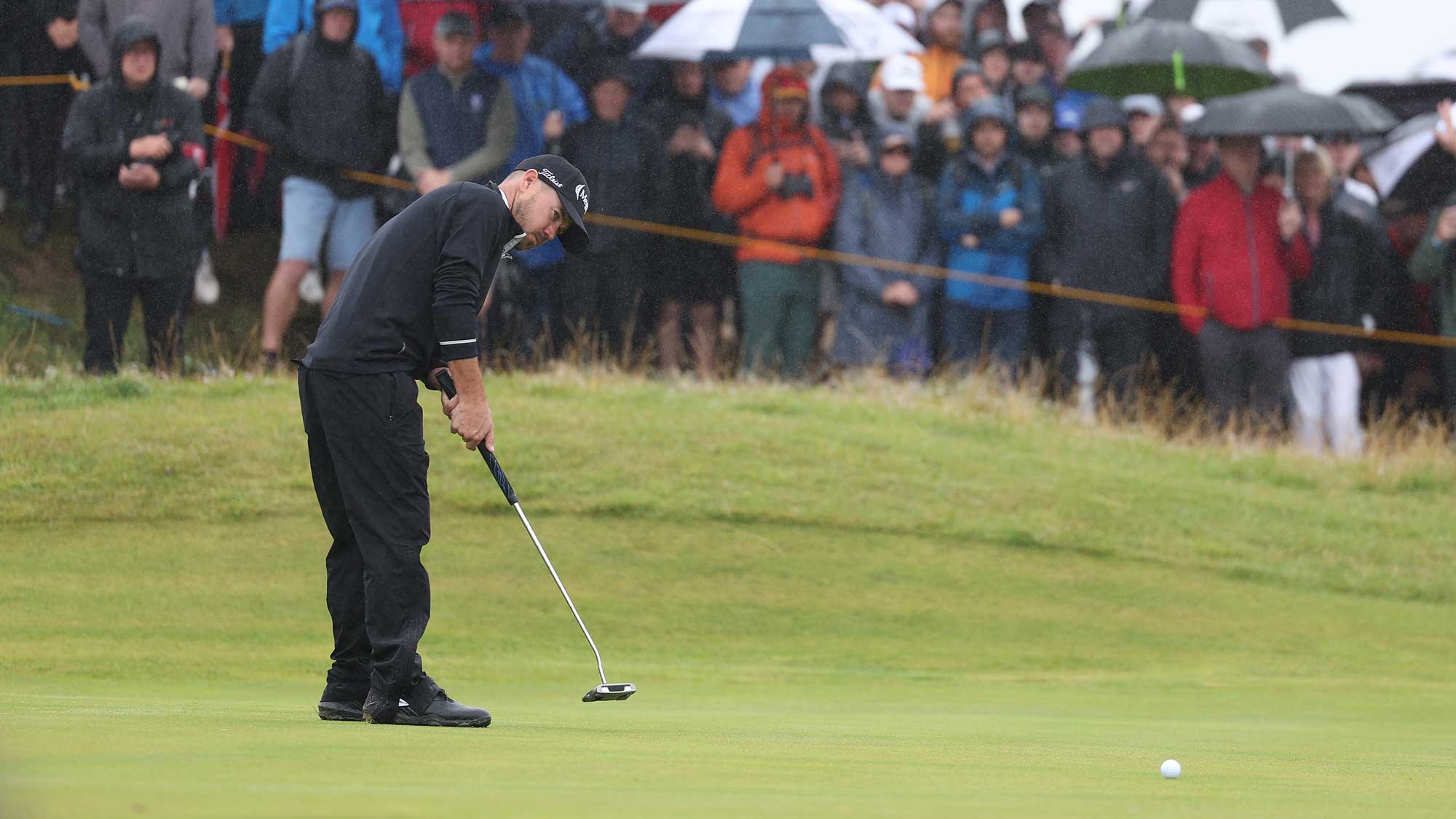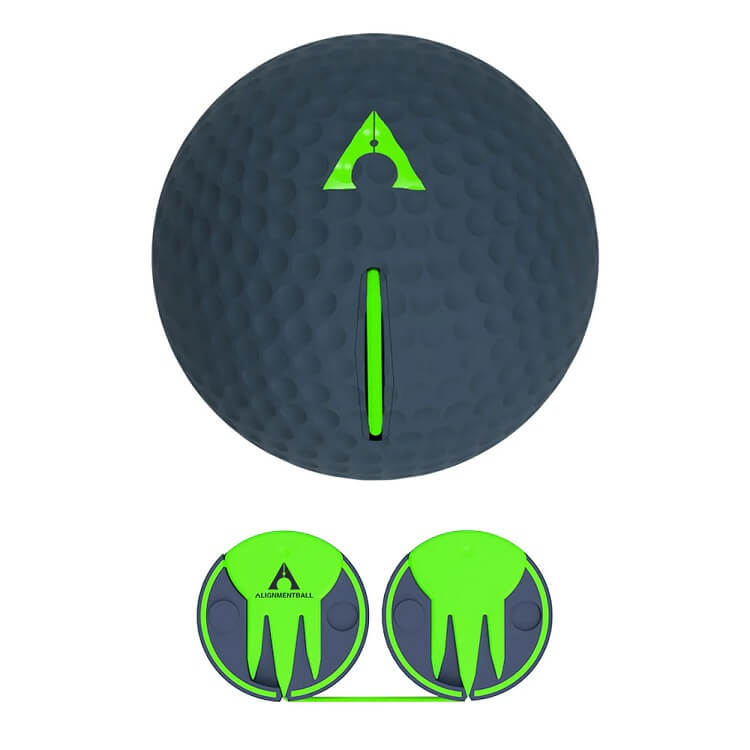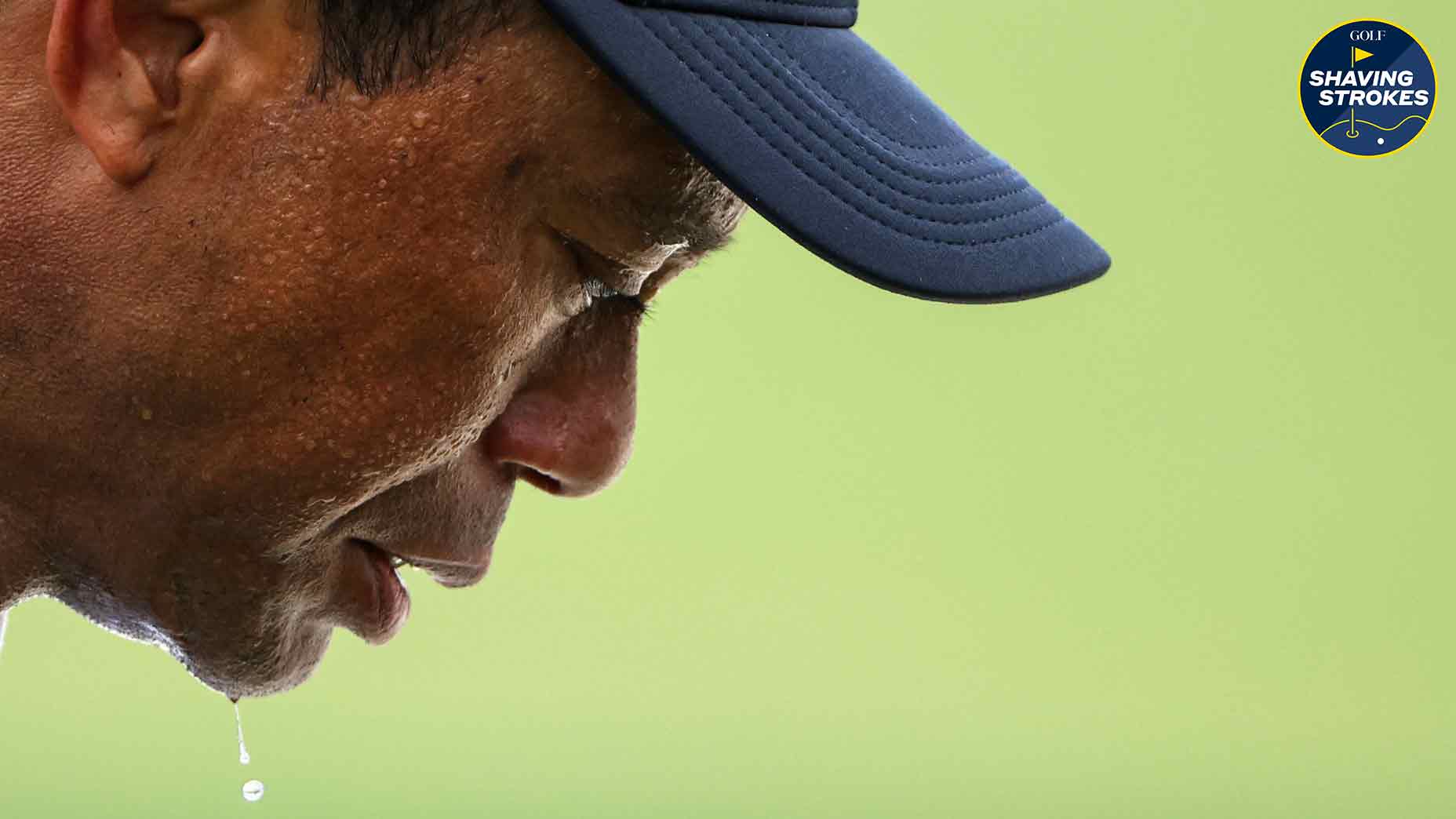I’m playing in my first-ever Pro Am. Here are 6 ways I’m preparing

Here are the six ways GOLF Instruction Editor Nick Dimengo is getting ready for his first-ever Pro Am.
YouTube/ndimengo
Welcome to Shaving Strokes, a new GOLF.com series in which we’re sharing improvements, learnings and takeaways from amateur golfers just like you — including some of the speed bumps and challenges they faced along the way.
In my 27 years around this sport, I’ve yet to play in a competitive tournament — until this upcoming Monday, when I’ll be participating in my first-ever golf Pro Am.
There are nerves, excitement and still a lot of work to do to fully prepare, but I’m slowly getting my mind right for the challenge ahead.
After all, I’ve seen the videos of other players at Pro Ams — and surely don’t want to go viral for all the wrong reasons.
I’m not joking. The two pro-am tee shots I watched went 47 yards.
— Monday Q Info (@acaseofthegolf1) July 12, 2023
Sometimes the content gods smile on you. pic.twitter.com/3FROpbOzii
Now I’m sure many of you are thinking how the hell I can be GOLF’s Instruction Editor and have never played in a golf tournament, but, hey, here I am. Like many of you, I’ve always just played the game for fun — so the stakes get a bit higher come Monday.
I’m trying to avoid thinking about the pressure and the eyeballs, especially since my teammate is Ryan Young, a top-notch golf teacher at Chambers Bay (site of the 2015 U.S. Open).
I’ll be leaning on Ryan as much as possible, absorbing all sorts of instructional tips throughout the round. The good news? Each of you should benefit, as I’ll be sharing BTS photos and videos on both Instagram and YouTube of specific shots that Young gives tips on during the Pro Am.
In the meantime, I’m trying to just control what I can — all in hopes of avoiding embarrassment. So take a look below at the six things I’m doing to get ready for this golf Pro Am; they may help you play your best next time you tee it up!
Drills to square the clubface
I’ve been a work in progress all summer long — which I’ve detailed in other Shaving Strokes pieces — with most of my efforts focusing on both setup and rotation.
After a recent lesson with GOLF Top 100 Teacher Brian Mogg, he helped me understand that these issues are correlating with my open clubface, which is causing the ball to slice.
Says Mogg, “with your driver, you’re way too close to the ball and erect with your spine. So you’re standing upright, and when you go into your backswing, you fall into the ball a little bit — which will open up the clubface all day long.”
To help me correct this, Mogg had me back away from the ball by about three inches, drop my hands to about mid-zipper on my shorts, rotate my left forearm inward towards me, and then soften up my right elbow (almost allowing it to rest on my back hip).
By making those adjustments, I’ve been able to square the clubface through my entire backswing until impact, leading to much more solid (and longer) shots.
Short putts
The difference between just playing well in my first-ever golf Pro Am and actually competing in it will come down to putting.
While I may not be able to hit every fairway off the tee or the majority of greens in regulation with my approach shots, if I’m able to shave a few strokes off putts within 3-5 feet, I can give Young and I an opportunity to score low.
To help me practice on those 3-footers (pros make about 98% of putts from that range), Young has me doing a fun drill to hone in my putting stroke.
Setting up nine golf balls from a 3-foot radius around the hole, I’m moving around the horn trying to make all nine without missing. If I miss just one, I have to start the entire process over.
While the drill seems intense; that’s the point!
The sole purpose is to lock in mentally and stay focused, keeping with the same routine before each shot — so it’s not a speed drill, it’s a precision drill.
If I can make about 75% of my putts within 3-feet during the Pro Am, I’ll be proud of myself. But the practice is where I’ll find my rhythm and routine.
Using training aids
I get sent golf training aids all the time, and I’ve never really been one to take advantage of such a hook up — until recently.
While it can feel a bit funny to go to the driving range with some of these products, I’ve learned to get over it and put them to good use — regardless of some of the funny looks I get when I show up.
There are two specific training aids that have really helped me during my Pro Am prep.
The first is this putting mirror. Not only is it the same aid that helped Brian Harman run away from the field to win this year’s Open Championship, but it’s also like having a coach right there on the green with you, reminding you to align over the ball and to keep the face square.
Another training aid that’s been really helpful in my prep is the KZN GPS Shot Tracker from Game Golf.
I’ve written about this product in the past, but after using it in a bunch of rounds since, I stand by it even more!
Essentially, the KZN Shot Tracker has allowed me to really get to know each one of my clubs. Instead of ballparking what club to use from a certain distance, it shows me cold hard data, allowing me to make an educated decision off of my tendencies; not just a guess.
Since it tracks every swing — from the driving range to rounds with heavy wind that may impact ball flight — it’s a perfect training aid to learn a helluva lot about yourself as a golfer.
Chiropractic care
I’ve had a cranky right elbow for the past few months, and while there’s no real diagnosis for it quite yet, early indications are that it could be tendinitis, per my doctor.
While that’s a bigger issue in and of itself, it’s obviously something that has been impacting my golf game.
It’s part of the reason why I’ve started chiropractic care over the past three weeks.
The pain is intense during certain activities (one of which is swinging a golf club), so my chiropractor is adjusting my spine and neck to take some pressure off those nerves that run down my arm.
So instead of feeling fatigued (and sore) after about 13 holes — causing me to get lazy with my swing to decrease the painful sensation — I’m proactively taking care of myself.
I’ve always been one to focus on recovery; as I’ve been a long distance runner for about 20 years now. But I had never really worked on preventative care until now, with the chiropractic care helping me strengthen all parts of my body.
Not only am I getting stronger in my back, shoulders, wrists and neck, but I’m increasing my ability to rotate — allowing for more power as I come through my golf swing.
With reduced pain, I’m able to focus on my golf game and not the injury, which, hopefully, will allow me to withstand the physical and emotional toll of playing competitive golf in Monday’s Pro Am.
Tom Brady once said that chiropractic care helps him “feel like I’m one step ahead of the game.” So if it’s good enough for the GOAT to endorse, it’s something I figured I could try for myself as well — and the benefits have already been positive.
Chip shots from around the green
Throughout the summer, I’ve experimented using both my 60-degree and my pitching wedge while chipping. The former is much harder to hit with precision (for me anyway), but the latter is producing nice results by using the old bump and run strategy.
When doing this, I simply open the face, choke up on the grip — which helps limit the rotation of my backswing and follow through — and use the bounce of the club to put some nice spin on the ball.
One of the things I had been struggling with recently is chunking the ball from this area; regardless of which club I chose.
To help correct the issue, Young found a glaring reason why it was happening — I felt like I was putting my weight forward, but I was actually counteracting the move by keeping my head back with my eyes over the ball.
This video is a good example of my former setup, and Young acknowledging the problem.
As the video shows, by simply correcting one simple setup position (leaning back over the ball), I was able to use the bounce as it’s supposed to be used. This resulted in the two shots in my Instagram post coming within a foot of the hole.
Studying the course
A big piece of mental advice I recently received came from GOLF Top 100 Teacher Scott Munroe.
When speaking with him about my running habits, he asked me the following.
“You’re a big runner, right? What do you do to prepare for a race? What music do you listen to? How do you breathe? Do you feel more comfortable running a route you know versus one that you’re doing for the first time?”
When I answered his questions — which involved my admission that I listen to classical music while running to calm my breathing and take my focus off of my pace — he abruptly said, “we need to get your mind to the same place on the golf course, bud.”
That’s why I’m studying the course that’s hosting my first-ever golf Pro Am.
From seeing the course layout to understanding yardages, I’m making notes about what holes have obstacles like bunkers or ponds, and which clubs I’ll need to use on each.
Most amateurs probably wouldn’t care this much. But I know myself too well, and I know if I’m uncomfortable and unprepared, those nerves could get the best of me early on.
By putting together a game plan, I’ll know what’s ahead of me and won’t be surprised in the moment — which will release tension and just allow me to hit my shot during the event.
Want to share your firsthand experience for a chance to be featured in a future Shaving Strokes article? Share your details and progress by emailing me at nick.dimengo@golf.com. We’re all in this together, so let’s share our wins, our learnings and our frustrations to help one another improve!













